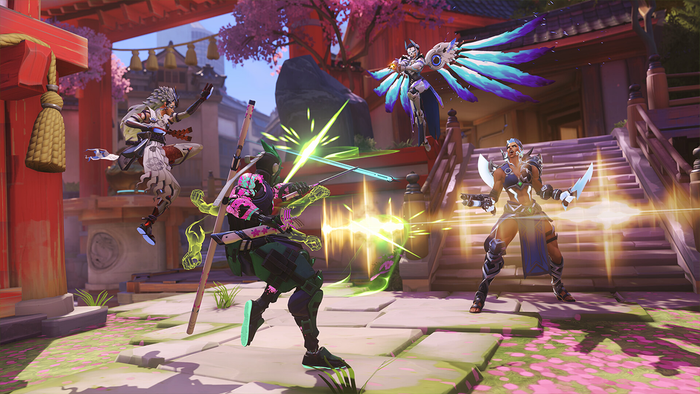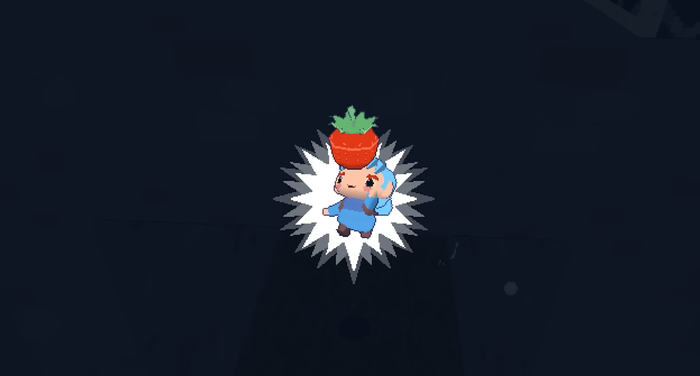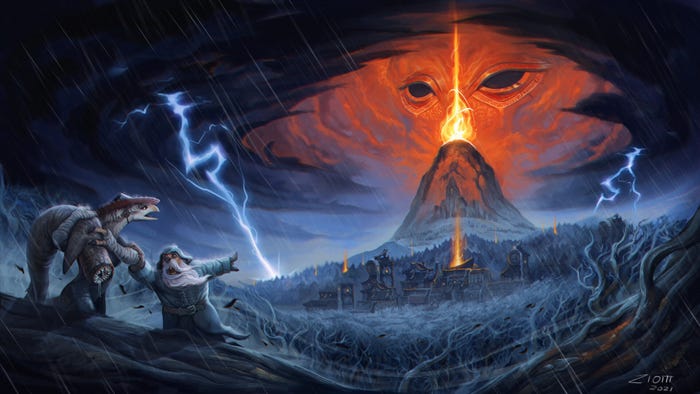
Featured Blog | This community-written post highlights the best of what the game industry has to offer. Read more like it on the Game Developer Blogs.
Sure, you're looking at the top games on the Steam charts, but are those really the 'top games'? This and lots more discoverability takes in this latest round-up.

[The GameDiscoverCo game discovery newsletter is written by ‘how people find your game’ expert & GameDiscoverCo founder Simon Carless, and is a regular look at how people discover and buy video games in the 2020s.]
And GameDiscoverCo returns, keen to inject video game trends and statistics directly into your eyeballs. OK, fine, not DIRECTLY: we’ll let you use your brain processing and ocular appendages to do it instead.
We’re kicking off the second GameDiscoverCo free newsletter of this week. And it starts with a look at something that’s fascinated us for a long time, as a naturally inquisitive, data-driven people. Why is it so difficult to work out how well games are actually selling, and how much money is being made? Because… it really is.
How video game charts work - it’s not simple, folks
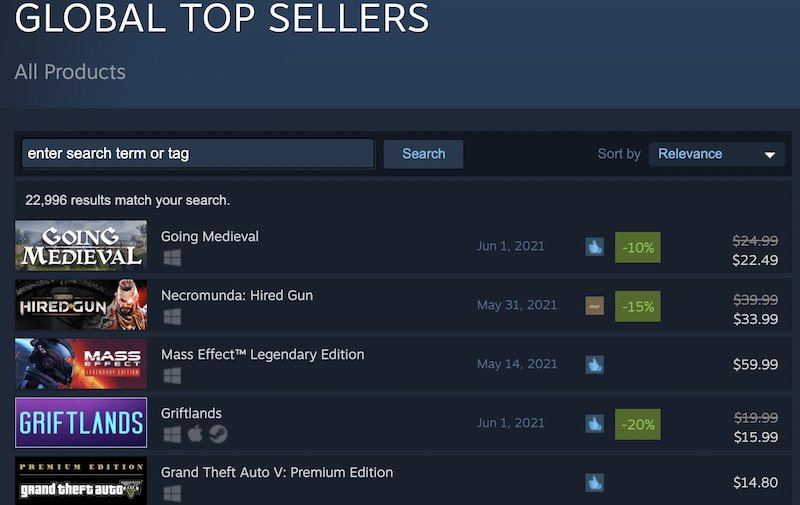
So, somewhat flippantly, I Tweeted this out earlier this week: “[Above]: current Steam global PC game sales charts. [Below]: the GameDiscoverCo Steam Hype chart we sent out to Plus subscribers (http://newsletter.gamediscover.co/subscribe) last Friday, with our top predictions. (Just sayin'.)”

Obviously, this doesn’t happen most of the time. (But it’s great for our ego when it does!) Why not? Well - games get released at different times of the week. And Steam’s more or less ‘real-time revenue’ charts mean games can peak at launch and zoom down swiftly.
But it also hints at a cruel fact: unless we get full accounting-level access to every video game company in the world, we’re never going to fully understand how much revenue video games make. And there are so many lenses to view and understand this data.
Even Steam’s charts, which are some of the most transparent around, have certain built-in lens that are worth understanding. In fact, I checked with the team at Valve about the Steam global sellers chart, and confirmed a couple of things I was reasonably sure was the case:
Items in the Steam global charts are ranked on an individual SKU/item basis. Which is why you have a separate chart ranking for both Going Medieval (#2 right now), and the Going Medieval: Fortified Edition bundle (#48 right now).
In-app revenue via Steam Wallet is not taken into account for these charts. This isn’t surprising, because there would be no way to display it in the Steam interface. But there’s a lot of high-grossing F2P Steam games that can never have any entries on these ‘global top sellers’ charts.
However, if you go look at the ‘Top Sellers’ chart in Steam’s Free To Play section, Valve confirmed to me that is ranked by “total gross - which is a combination of in app purchases and any DLC on the Steam store.” Not unexpected, but notable. (Beware: if you click through to ‘Browse All Top Sellers’, you’ll get to a list of the top-selling DLC for F2P games - which doesn’t try to aggregate DLC or IAP into one entry.)
Oh, on charts in general, Valve also notes: “Please note that these lists are dynamically generated for each user and - depending on what games you own, your filter settings, and where you live - certain titles may be omitted from your view.” FYI!
So a couple of points with this. Firstly, we can see the top F2P games by revenue on Steam in real-time, which is actually really great data that I’m not sure everyone is paying attention to:
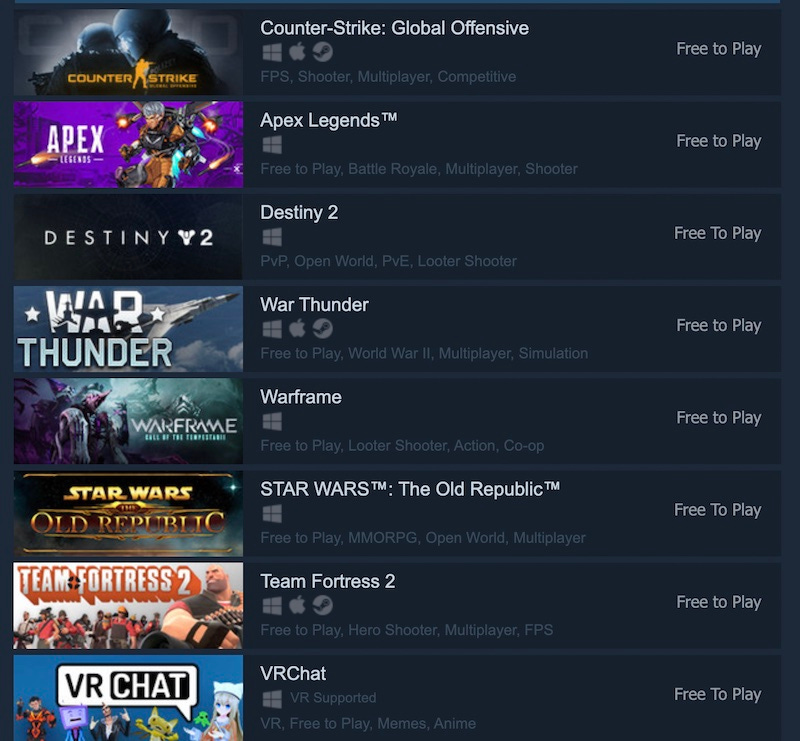
But also, we can try to cross-reference similar ‘Top Sellers’ charts for overlapping Steam tags. We can get an idea of whether F2P or paid+DLC games are collectively making more money than the top premium games, in real-time. And some of them certainly are! A couple of examples:
Checking out ‘Shooter’ as a Steam tag, we have context that Necromunda: Hired Gun is in the top 3 or 4 titles worldwide right now, as a standalone premium game. But it’s only #11 in the ‘top-selling Shooters��’ real-time category, behind titles like Playerunknown’s Battlegrounds, Grand Theft Auto V, Borderlands 3, and more.
If you look in ‘Sandbox’ as a Steam tag, you can see that Going Medieval, which was #1 in the ‘Global Top Sellers’ chart in the example I gave above, is only #4 in that chart, behind ARK: Survival Evolved, Rust, and No Man’s Sky. All of those games are paid + DLC or IAP in some way - which is why individual SKUs aren’t appearing high up Global Top Sellers.
So, as I said - different lenses, different results. For example, the Epic Games Store Top 25, which we’ve started tracking for GameDiscoverCo Plus recently, now updates daily and seems to rank by all purchases, including DLC and IAP, ignoring Fortnite. (Which is why you see the F2P Rocket League and IAP-enhanced GTA and Red Dead Redemption titles consistently so high up the charts.)
And then the Switch eShop doesn’t include IAP in any way in its charts. It ranks games by ‘largest number of downloads over the last 14 days’ without taking into account revenue. And it doesn’t take into account F2P game download counts in most, but not all views. (Toldya this is complicated.)
Xbox has been transitioning how it shows charts, and the web interface currently only shows ‘most played’ - which makes sense to Microsoft, in a world where Game Pass subscriptions and playtime are the player success metric. And looks like PlayStation’s new store has a ‘sort by best-selling’, but I’m not really sure what it is - more investigation needed.
Anyhow, I wanted to praise any platform that show real-time charts in some way. It massively helps our understanding. Understanding what games are popular is vital data. So hopefully some of the above helps you understand what to look at, in what order!
Mind Scanners: lessons from its release?
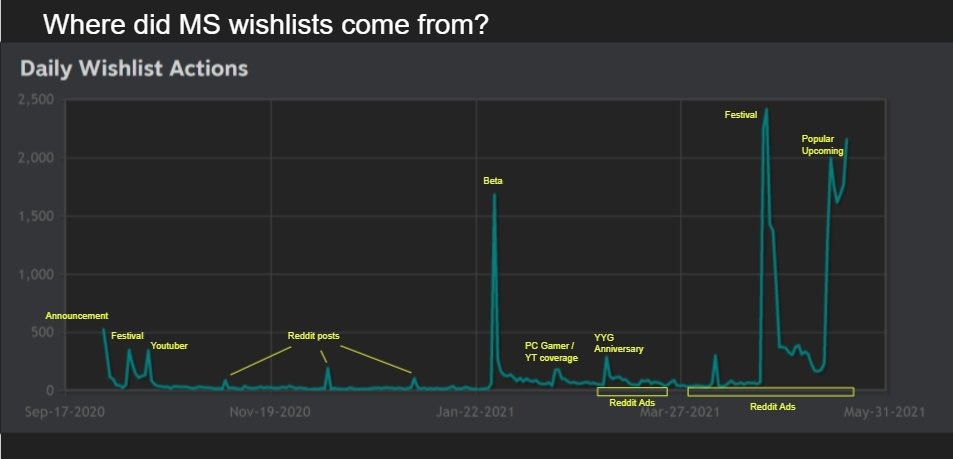
Have to confess I know Alina and Rafal from developer/publisher Brave At Night fairly well, since my buddies at No More Robots published their first game, the excellent kingdom simulator narrative game Yes, Your Grace.
They’re another of an rising breed of developers we see nowadays who are agile enough to publish third-party games themselves - as well as be published by others, if the deal is right.
So it was interesting to see a Twitter thread from them on the launch of Mind Scanners, their first published game - it was developed by The Outer Zone:
They noted that “Mind Scanners had almost 40,000 wishlists by launch, which is way more than we expected.” And the above wishlist analysis is a really good look at what moved the needle for them. Couple of interesting points from my point of view:
Mind Scanners had two public Steam demos - for a Steam Festival and for LudoNarraCon - and also had a private Beta with an associated Alpha Beta Gamer YouTube video, and each performed differently. This is an argument to have multiple bites at the cherry to create marketing spikes. (Why shouldn’t all games be in a NextFest, but also have at least one private Beta?)
Brave At Night noted that they were very careful & strategic with the demo/beta itself, and “gave people just enough gameplay to get them hooked, with a lovely prompt at the end to wishlist the game”. Do you have a shorter, well-planned demo with a ‘call to action’ at the end? Because that’s how you make them an effective wishlist tool!
Intelligent use of subReddits for promotion, such as this post in r/PixelArt were key to some of the medium-sized social media spikes. And the game - which is a dystopian cyberpunk twist on Papers, Please - is pretty unconventional, but played well with streamers like Splattercat. That’s key to some of those YouTuber spikes.
If you can hit the ‘Popular Upcoming’ chart on Steam, it seems to pretty much guarantee you 2,500-5,000+ wishlists at the end of your promo campaign. (I suspect they are lower quality, but hey, free wishlists!) Your inclusion is based on the rate/speed of your wishlists just before release - maybe a reason to time some of your promotions, as happened here in the aftermath of LudoNarraCon.
Overall, Mind Scanners has almost 200 Very Positive reviews so far - which isn’t a smash hit, of course, but for a smaller publisher with modest goals, is a really good result.
There’s no reason to believe that, with a unique proposition and a long tail, it won’t reach 500-1,000 Steam reviews (20,000-50,000 copies sold or more) over time - and that’s not counting any console conversions. So it’s a great case study - thanks to them for sharing the data.
The game discovery news round-up..

We’ll finish off this week’s free newsletters with a flourish, and with a whole bunch of useful info from the world of game platforms and discovery. Thanks - as always - for reading:
Exciting news on the Steam features front: Valve has introduced new DIY collaborative bundles, so popular on Itch recently, which “allow developers and publishers to create their own Steam multi-game bundles with other developers and publishers… you can [now] create and manage these bundles yourself.” Oh, and a great additional point: “We hope this also helps those who offer their game soundtrack(s) for sale on Steam, and wish to have the proceeds paid directly to the musician.”
That thing called ‘E3 week’ - cohabiting with ‘Keighleyfest’ and a host of others events - is basically here. And we found a couple of better links where you can monitor the streaming action. E3 Recap for 2021 will cue up all the new game trailers/announces as they debut, and was very helpful in 2020. And here’s a partial (unofficial) E3 countdown site. First up is Guerrilla Collective 2 Pt. 1, on Saturday! (Oh, and there’s a virtual JW if you want to chat to other game industry folks and you miss that particular hotel lobby.)
Google’s Stadia cloud gaming service is still moving forwards, so it’s interesting to see a larger partnership with Ubisoft announced. Specifically, the Ubisoft+ cloud gaming service beta on Stadia is expanding to Canada, the UK, France, Germany, Belgium and Switzerland. Plus, titles such as Far Cry 6 - plus back catalog - are confirmed to be playable on Stadia. (Not a game changer - Ubisoft+ is also on Luna and sold standalone. But some big-publisher support is good.)
For anyone with microtransactions in their games - Lifepack is a great new charity idea: “Video game partners integrate LifePack-badged microtransactions into game play, directly raising funds for the purchase and distribution of RUTF - a lifesaving medicinal food that can bring severely malnourished children back from the brink of death in a matter of weeks.” Their partner, Action Against Hunger, has a great CharityNavigator rating, and Spongebob: Krusty Cook-Off already added a LifePack item, so reach out if you think you can also help.
An update on the ‘eShop discount if players bought your other games’ discount tactic I discussed in the last newsletter. A friend of the newsletter tells me he believes that this was how Nintendo solved for Qubic’s previous eShop shenanigans: “If a Switch game makes a sale with an ‘owner discount’ active, it doesn't count towards the sale number at all.” So if you want to be in the charts with your game, please bear that in mind.
Microlinks: a bit more on how PlayStation Studios is positioning Sony’s first-party games for success; Amazon Prime Day is June 21st/22nd (days!) and will include Battlefield 4 for free, plus a bunch more deals/free games; outside of games, how ‘virtual kitchens’ are solving for delivery app discovery issues - by becoming “a food factory with maximum output”.
Finally, if you’re wondering why there’s a bit of an investment frenzy around video games, we found an Axios piece with related diagram (citing PwC research) which helps explain things:
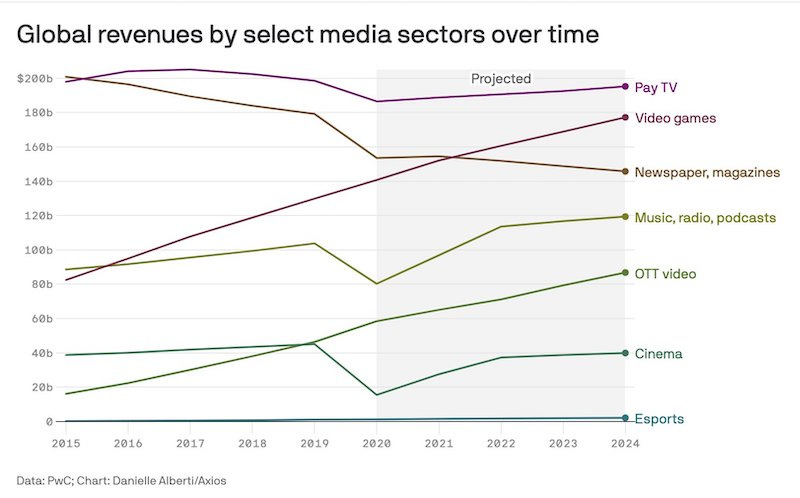
The story of paid media over the next few years will be the story of the rise of games, then? With so many ‘born digital’ players who are spending time on Roblox and Minecraft and will graduate to other games, we wouldn’t bet against it.
[We’re GameDiscoverCo, a new agency based around one simple issue: how do players find, buy and enjoy your premium PC or console game? You can subscribe to GameDiscoverCo Plus to get access to exclusive newsletters, interactive daily rankings of every unreleased Steam game, and lots more besides.]
Read more about:
Featured BlogsAbout the Author(s)
You May Also Like


